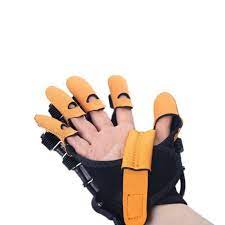For people with mobility issues, performing simple tasks like transferring from a bed to a wheelchair or vice versa can be quite challenging. This is where transfer chairs come in, making it easier for individuals with mobility issues to move around. A transfer chair is a lightweight and compact chair designed specifically for transfers. They are ideal for both indoor and outdoor use and come in different designs and styles. In this ultimate guide, we will explore everything you need to know about transfer chairs.
Types of Transfer Chairs
Transfer chairs come in different types, each with unique features that cater to specific user needs. Some of the common types include standard self-propelled transfer chairs, folding transit chairs, attendant-propelled transfer chairs, bariatric transport chairs, and reclining transport chairs. Standard self-propelled transfer chairs are designed for independent users who can maneuver the chair themselves while folding transit chairs are ideal for traveling as they can be easily folded and stored away. Attendant-propelled transfer chairs require an attendant or caregiver to push it around while bariatric transport chairs can accommodate larger weight capacities.
Features of Transfer Chairs
When choosing a robotic glove for avc (manusa robotica pentru avc) transfer chair, it’s important to consider its features to ensure that it meets your specific needs. Some of the features include adjustable footrests, armrests, seat width and height adjustments, foldable frames for easy storage and transportation, padded seats and backrests for comfort during extended periods of sitting and brakes.
Benefits of using Transfer Chairs
Transfer chairs offer numerous benefits to users with mobility issues such as increased independence by allowing them to move around easily without assistance from caregivers or family members. They also provide safety during transfers by reducing the risk of falls or injuries that may occur during transfers.
How to choose the right Transfer Chair
Choosing the right transfer chair depends on several factors, including your individual needs, budget, and lifestyle. Some of the things to consider when choosing a transfer chair include the type of transfer chair, weight capacity, the environment in which it will be used, user comfort, and ease of use.
Conclusion
In conclusion, transfer chairs are an excellent solution for people with mobility issues who need assistance with transfers. They come in different types and designs to cater to specific user needs. When choosing a transfer chair, it’s important to consider its features and benefits to ensure that it meets your individual needs. With this ultimate guide, you have all the information you need to choose the right transfer chair for you or your loved one. Get yourself a transfer chair today and enjoy effortless mobility!
Conclusion:
Transfer chairs are essential mobility aids that provide individuals with mobility issues independence and safety during transfers. They come in different types and designs with unique features that cater to specific user needs. When choosing a transfer chair, it’s important to consider factors such as weight capacity, user comfort, ease of use and environment in which it will be used. By understanding these factors alongside the benefits of using transfer chairs outlined above, you can confidently make an informed decision about which transfer chair is right for you or your loved ones.



